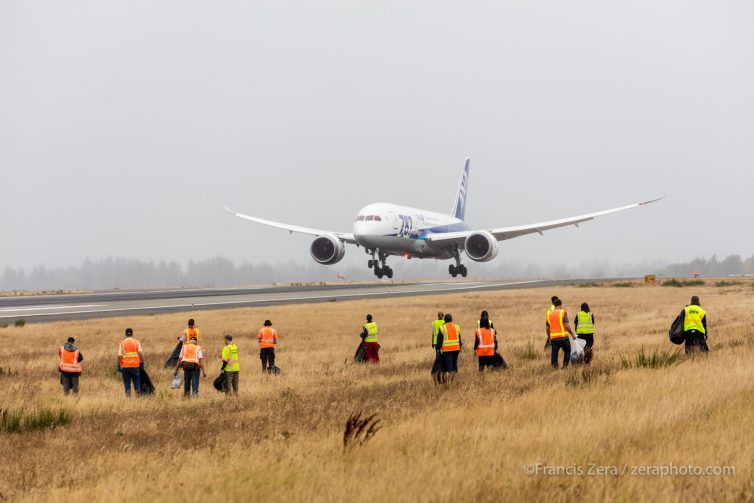
An ANA 787-8 made a graceful landing as it arrived from Tokyo’s Narita International Airport (NRT) during the 2016 FOD walk
FOD (foreign object debris) is the scourge of airport operations. FOD includes the mundane as well as the unusual: baggage-claim tickets, random bits of plastic, airplane parts, dead animals, rocks, and clumps of loose dead vegetation. Keeping runways and taxiways clear of FOD is a seemingly never-ending battle; airports’ operations areas are festooned with signs both warning of the dangers of FOD and reminding airport personnel to constantly be watching for, and picking up, such trash.
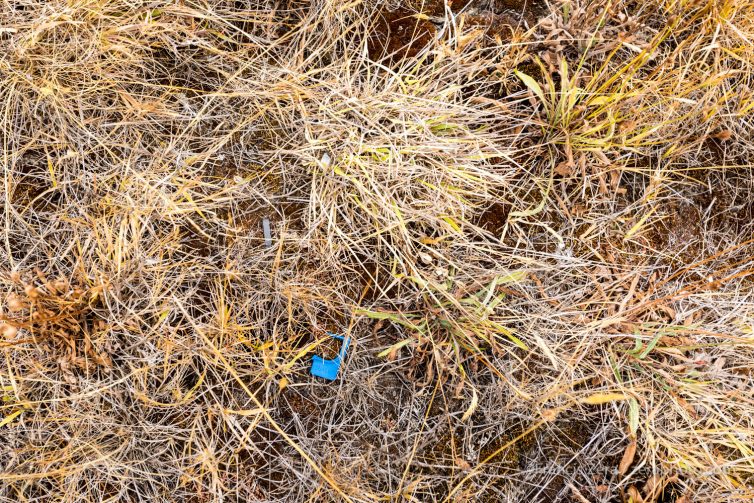
Items as seemingly innocuous as a scrap of plastic hold the potential to damage an aircraft
According to a 2013 FAA fact sheet, ’œFOD can be ingested in an aircraft engine, which can result in damage to the aircraft or cause an accident. It can damage or become lodged in aircraft operating mechanisms or cut aircraft tires. Boeing estimates that FOD causes an estimated $4 billion in damage to engines and aircraft taken out of service each year.’
Wikipedia’s entry on FOD claims the total is significantly higher, citing a now-offline 2008 report claiming $13 billion in direct and indirect costs to the aviation industry as a whole. In either instance, FOD damage is very expensive, and it makes sense that every airport have a FOD management plan.
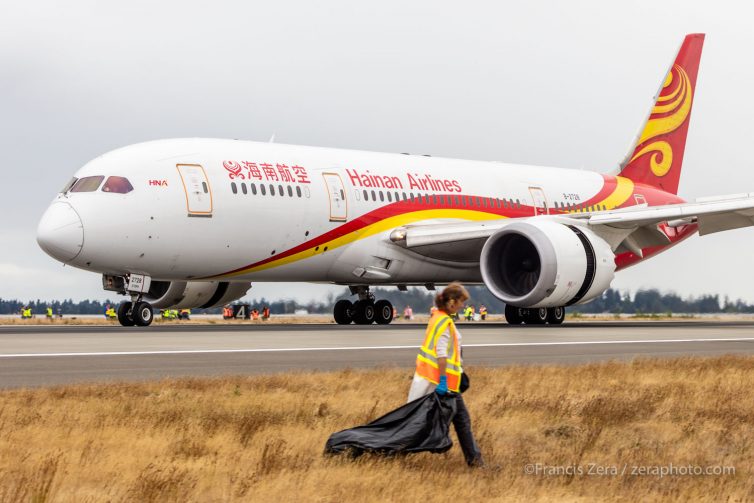
This was definitely the most fun I’ve ever had picking up trash. A Hainan Airlines 787-8 arriving from Shanghai (PVG) was just one of many beautiful aircraft we got to experience up-close.
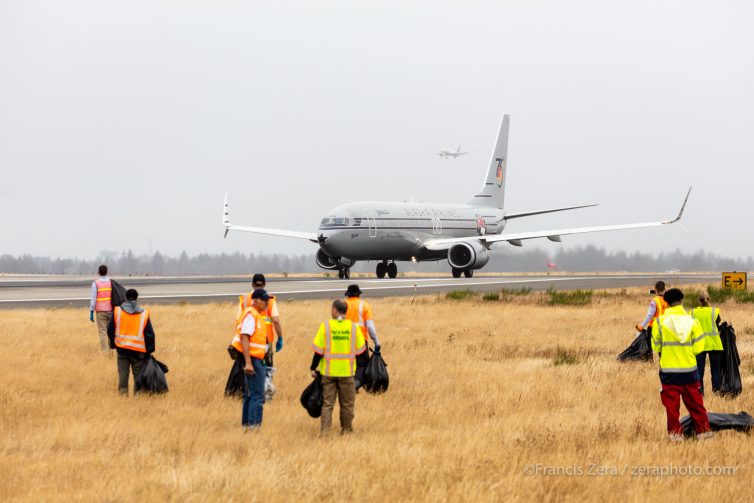
It’s a balancing act, being alert for the smallest bit of trash while surrounded by interesting aircraft. This is Alaska Airlines’ 1940s-themed 75th anniversary livery on a 737-800.
Aircraft are designed with an eye toward reducing the potential for FOD damage while traveling along runways, aprons, and taxiways. Features such as tall landing gear that raise the height of engine intakes, the mounting of engines high on the rear of a fuselage (such as Boeing’s 727, the venerable MD-80, and the Bombardier CRJ), or even atop the wings (as with the HondaJet), while not always originally designed specifically for FOD avoidance, definitely take it into consideration.
Many helicopters have elaborate engine-air intake systems designed to keep ingested foreign objects away from delicate engine internals. In extreme cases, FOD has brought down aircraft to tragic effect (see Air France’s Concorde flight 4590).
- This Delta Connection CRJ-702ER’s engines are placed high atop the fuselage, which helps reduce the possibility of FOD ingestion
- The sheer size of an airport’s runways quickly becomes apparent as you walk along
- An Alaska Airlines 737-900ER in the lovely new livery provides a heck of a backdrop for trash duty
Seattle-Tacoma International Airport recently organized its 23rd annual FOD walk, in which roughly 100 properly-badged airport and airline employees, service providers, and subcontractors walked side-by-side along the grassy areas between the runways and taxiways. The exercise takes several hours, and results in a surprising collection of junk.
The walk offers an opportunity like no other to experience aircraft movements as closely as anyone is ever likely to; it’s definitely excellent compensation for picking up someone else’s trash.
- The working theory regarding this cell phone is that it may have been lost during the prior year’s FOD walk
- Nothing is too small to pick up during a FOD walk
- FOD walk participants search the grassy area along a taxiway in front of Sea-Tac Airport’s main terminal
Certain bird species are classified as being particularly hazardous to aircraft based on either hunting, flying, or preferred nesting habitats. Sea-Tac Airport Media Officer Brian DeRoy provided us with a list of the bird remains from species classified as hazardous that were found during this year’s walk:
- Osprey: 1
- Red tailed hawk: 2
- Gull: 2
- Barn owl: 5
- Dove/pigeon: 1
- American kestrel: 2
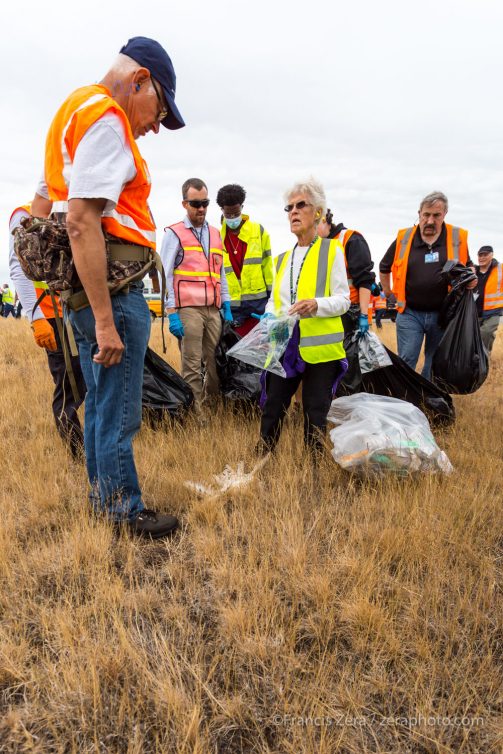
The remains of a barn owl were bagged for later identification
This year’s total FOD collection resulted in two truckloads of debris, including lots of paper and plastic luggage tags, candy wrappers and food containers, one aircraft tire piece, one small aircraft access door that DeRoy compared to an automobile gas cap in size, and a variety of aircraft body pieces. There was no total weight available this year.
- A Sea-Tac Airport environmental officer discusses details about bird remains found during the walk
- Collected FOD is bagged for sorting and proper disposal
- The huge bags of collected FOD eventually filled two trucks
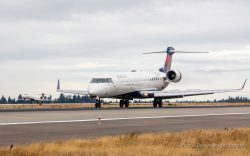
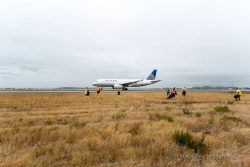
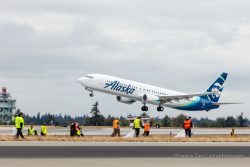
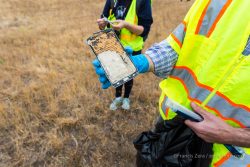
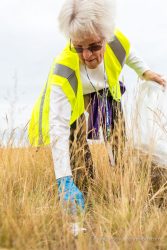
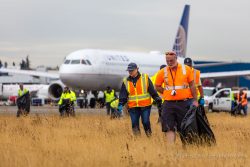
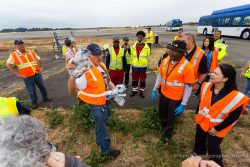
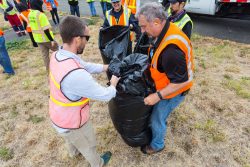
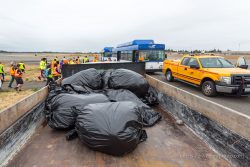
At MIA a few years ago, a big hazard was wild rabbits that lived in the grassy areas along side what is now Runway 9/27. The airport authority had to hire a trapper to remove these animals and move them to another area away from the airport as the intakes of aircraft engines could easily suck them in. Also, at least once a week, a dead one would be found on the runway after being ran over by landing planes.
I have never seen a walk like this at MIA or FLL, as the mowers used to cut the grass also suck up the debris and it gets hauled off to the landfill away from the airport. Being in a tropical environment, plant life (grass, flowers, trees, etc.) can grow very quickly, so each area of the airport is touched at least twice a month.
How can I get in on one of these FOD collections? I live in Seattle area.
I was thinking the exact same thing. Would it be possible for volunteers to assist with this?
I emailed the folks at Sea-Tac this morning about Markus’ and Patrick’s questions. Airport officials said that, due to security and logistics concerns, only properly badged airport employees and vendors can participate in the FOD walk.